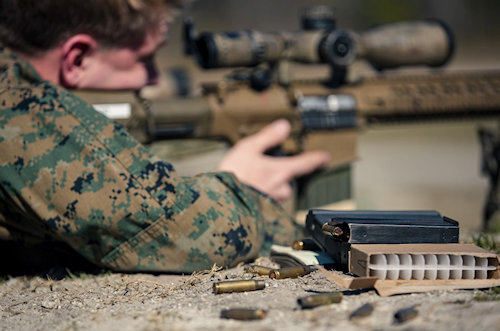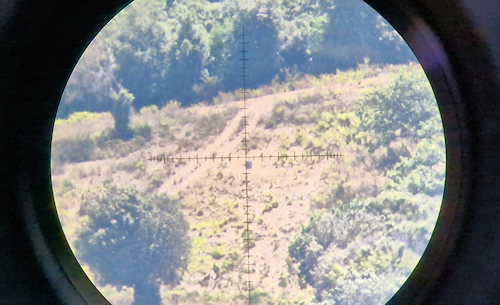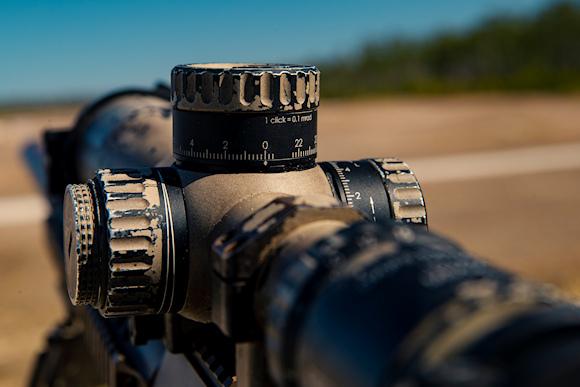"Power is nothing without Control" was the apt slogan of a famous tire brand.
We can apply this concept in an absolutely precise way also to the discipline of Long Distance Shooting. Let's imagine the flight of a bullet fired from a rifle.
The "power" (thrust) which is often associated with "velocity" (acceleration), in this case of a bullet fired from a long-barreled, rifled weapon, is determined by the quantity and type of powder present in the cartridge case, which it is burned through the primer placed at its base.
What we are trying to achieve is one supersonic speed throughout the projectile's flight towards the target which, for "long range" shooting, can be placed up to a distance of 1200 meters (last photo).
But do power and therefore speed always mean "precision"?
Not necessarily. So let's return to our other famous benchmark: "control".
In long-distance shooting, the quality of the power, i.e. the thrust, imparted to the projectile must be sought above all.
If, by seeking the maximum possible speed, the explosion of the gunpowder contained in the cartridge case is too powerful, the thrust force will be dispersed already inside the barrel itself which, in addition to causing heavy stress to all the mechanical and optical parts of the weapon (as well as the shooter's physique), will give rise to "incoherent" ballistic trajectories, which do not allow the correct settings to be applied to the aiming system, both during the zeroing phase and subsequent shooting correction.

But what is meant by thrust quality?
Accelerating the projectile through the barrel too quickly will result in:
- Excessive and disharmonious fluctuating movement of the barrel, foreseen by the design.
- Destabilization of the flight path of the projectile, caused by oscillations of the projectile along its axis of rotation.
Given some standard dimensions that comply with regulations, the peculiar construction technology and the type of steel used, the barrel of a rifle is designed with certain geometric and mechanical characteristics: length, rifling pitch, number of grooves, more or less greater thickness ( in relation to the caliber and intended use: military, hunting, precision shooting, dynamic shooting...), possibility of applying a muzzle compensator (or muzzle).
Based on these characteristics, the correct type of cartridge must be selected.
In the case of using commercial ammunition, taking the pressure created in the combustion chamber by the combustion of the triggered powder as correct on average - because it is established during production - we imagine the projectile starting its acceleration motion along the barrel: it undergoes a forming process mechanics which will see it "screw" and exit the muzzle under the thrust of the firing gases and in full rotation.
The more this process occurs in a way without overvoltages and coherently (just like a screw that turns precisely and progressively along its threaded seat), i.e. with the right push, the more the trajectory of the shot will be ballistically correct, predictable, and therefore "manageable". , thus allowing the creation of effective ballistic tables. Obviously without forgetting to consider the data relating to the ballistic coefficient provided by the cartridge manufacturer.

Despite the rotation imposed by the barrel, which will give rise to a gyroscopic stabilization effect, when the bullet leaves the muzzle its flight will inevitably be disturbed by the explosion that occurred behind it, which is now pushing it through that fluid called "air", which will disturb him in turn.
Also given the gravitational constant that attracts everything towards the center of the planet, the remaining physics that acts on the projectile begins its "battle" against the environment that surrounds the projectile (i.e. the air it passes through, with its density, temperature, humidity, barometric pressure, altitude... and above all the wind).
If the power, sorry... the "thrust" applied is correct, the fluid mechanics and the geometry (i.e. the more or less aerodynamic shape of the projectile), will put an end to the "battle" in the shortest possible time. However, if it is excessive, there will be destabilization and a consequent inconsistency of the flight path towards the target.
Paradoxically it often happens is (without the shooter realizing it) a projectile that is accurate at 500 meters (and beyond) is not accurate at 300: simply because it did not have the space to stabilize its rotational motion, given excessive thrust. All this gives rise to inconsistent patterns, defined as "correct and precise", which disorientate the shooter.
Obviously, the opposite concept also applies, although less frequent and annoying, that too mild a thrust does not allow the projectile to remain supersonic up to the target located at a long distance.
Given an acceptable compromise, that is, a cartridge capable of having a range as broad as possible, it will always be "the field" that determines the correct choice, which should also concern the highest performing caliber.
But that's another story...
Photo: US Marine Corps / Online Defense












